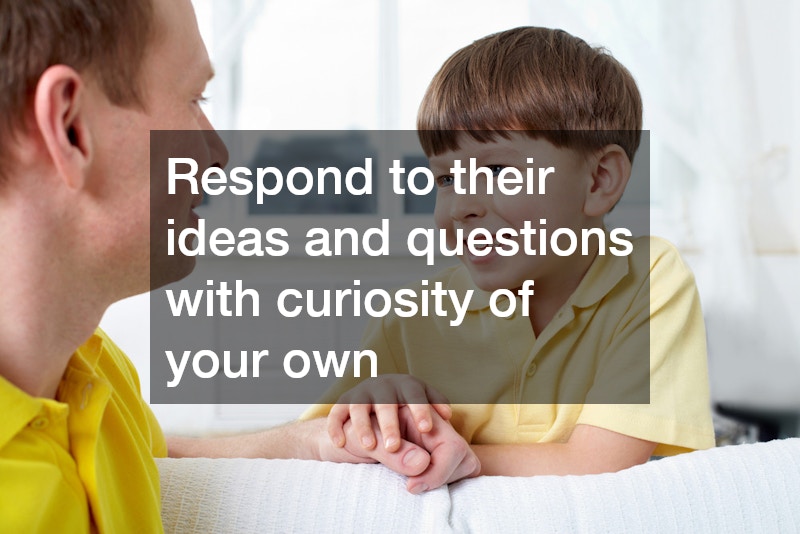
Fostering curiosity in children is one of the most important ways to help them develop critical thinking skills, creativity, and a love for learning. Sometimes, though, starting a conversation with kids can feel like pulling teeth—especially when the topic needs to be both engaging and educational. This guide explores a variety of conversation starters designed to spark curiosity in children, helping them explore the world around them in a fun and meaningful way.
Why Encouraging Curiosity Matters
Curiosity is the foundation of lifelong learning. When kids ask questions and explore new ideas, they develop problem-solving skills and a better understanding of the world. Encouraging curiosity also helps children:
- Build confidence in expressing their thoughts and ideas
- Learn to think critically and ask meaningful questions
- Develop empathy by understanding different perspectives
- Expand their vocabulary and communication skills
Using conversation starters is a simple but effective strategy to cultivate these skills while making everyday interactions enjoyable.
How to Approach Conversations With Kids

Before diving into specific conversation starters, it helps to understand the best way to approach conversations with children. Keep these tips in mind:
- Be patient: Give kids time to respond. Silence isn’t always a bad sign—it’s often a sign they are thinking.
- Show genuine interest: Respond to their ideas and questions with curiosity of your own.
- Avoid yes-or-no questions: Open-ended questions encourage discussion and exploration.
- Connect to their interests: Tailor conversations to topics they already enjoy, whether it’s animals, space, sports, or art.
By creating a safe and engaging space for dialogue, children are more likely to open up and ask their own questions.
Science and Nature: Spark Wonder About the World
Nature and science are perfect areas for curiosity-driven conversations. Here are some starter questions to ignite a child’s interest:
- “Why do you think the sky changes color at sunset?”
- “What would happen if animals could talk?”
- “How do plants know when to grow?”
- “If you could invent a new animal, what would it look like?”
- “Why do you think some animals live in the ocean while others live on land?”
Activities to support these conversations:
- Take a walk in the park and ask kids to describe what they see, hear, and smell.
- Visit a science museum and encourage them to ask questions about exhibits.
- Watch short documentaries and discuss the concepts together.
History and Culture: Explore the Past and Present
Kids are naturally curious about stories—especially when they involve people, places, or events that are different from their own experiences. Conversation starters about history and culture can open their minds to diverse perspectives:
- “What do you think life was like when people rode horses instead of cars?”
- “If you could visit any time period, when would it be?”
- “How do you think people in other countries celebrate special holidays?”
- “Why do you think some buildings are so old and still standing today?”
- “What would you pack if you traveled back in time?”
Activities to support these conversations:
- Read picture books or biographies about historical figures.
- Explore local museums or historical landmarks together.
- Watch age-appropriate documentaries or videos and discuss what surprised them.
Everyday Science and Technology: Curiosity at Home

Encouraging kids to observe and question the world around them can turn even everyday moments into learning experiences. Some conversation starters include:
- “How does our refrigerator keep food cold?”
- “Why do you think rain comes after clouds get full?”
- “If you could invent a machine to help around the house, what would it do?”
- “How does electricity make our lights turn on?”
- “Why do bubbles float and then pop?”
Tips for engaging activities:
- Conduct simple science experiments at home, like mixing vinegar and baking soda.
- Take apart old appliances (safely) and discuss how they work.
- Use digital learning tools or apps to explore scientific concepts interactively.
Creativity and Imagination: Let Their Minds Roam
Imaginative play is essential for developing creativity and problem-solving skills. Ask questions that encourage kids to dream, invent, and experiment:
- “If you had a magic backpack, what would be inside?”
- “How would you design your own city?”
- “If animals could go to school, what subjects would they study?”
- “What story would you write if you were the main character?”
- “If you could create a new planet, what would it look like?”
Activities to support these conversations:
- Encourage drawing, building, or storytelling around their ideas.
- Create “what if” scenarios and let them invent solutions or stories.
- Introduce role-playing games or imaginative challenges.
Conversation Starters for Kids to Encourage Reflection
Reflection helps children think critically about themselves and the world around them. Here are some thoughtful prompts:
- “What was the best part of your day and why?”
- “If you could change one thing in the world, what would it be?”
- “What makes you feel proud of yourself?”
- “Why do you think people make mistakes?”
- “What do you wonder about most right now?”
Tips for reflective conversations:
- Encourage kids to keep a curiosity journal or a “wonder list.”
- Discuss news stories or current events in a kid-friendly way.
- Celebrate their questions and ideas without judgment.
Tips for Successful Conversations With Kids
No matter what topic you choose, these tips can help make conversations more engaging and meaningful:
- Listen actively: Show that you value their thoughts. Repeat back ideas to confirm understanding.
- Encourage questions: Reward curiosity instead of only focusing on answers.
- Keep it playful: Use humor, stories, or games to make discussion fun.
- Follow their lead: Let the child’s interests guide the conversation rather than sticking strictly to your plan.
- Mix it up: Rotate between topics like science, history, creativity, and daily life to maintain variety.
- Engage the whole family: Use family conversation starters to include everyone in the discussion so all voices are heard and everyone feels involved.
In a Nutshell
Using conversation starters to engage children is more than just a way to fill quiet moments—it’s a tool to nurture curiosity, creativity, and critical thinking. By asking open-ended questions, exploring topics that matter to them, and creating a safe space for dialogue, parents and caregivers can help kids see the world as a place full of questions to explore and discoveries to make.
Starting simple conversations today can grow into a habit of lifelong learning tomorrow. So next time your child asks a question—or even just looks thoughtful—take the opportunity to explore their curiosity. You might be surprised at where the conversation leads.

